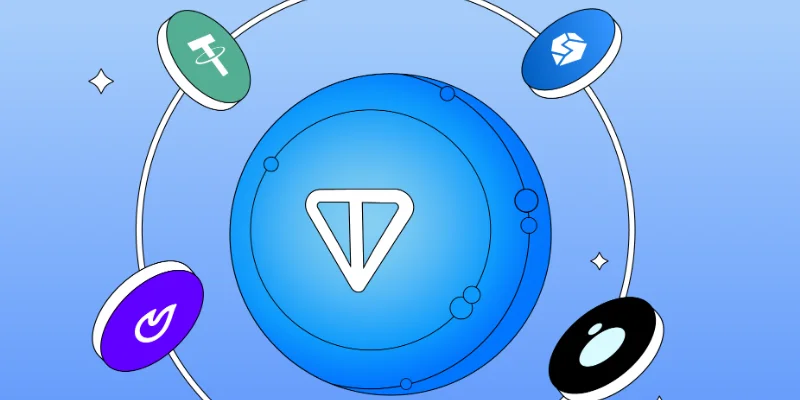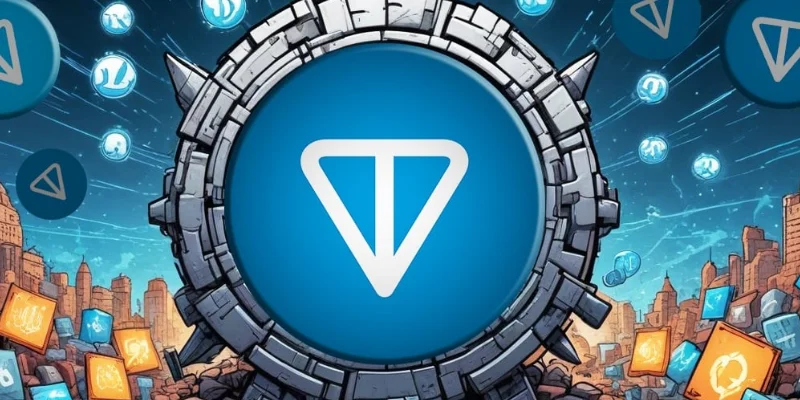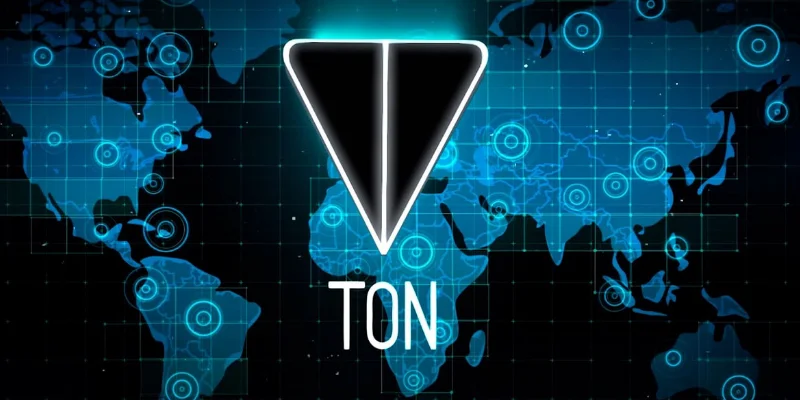Introduction to The Open Network (TON)
Today’s digital space is constantly evolving. People seek freedom, transparency, and efficient ways to interact online. This requires an innovative framework that can handle transactions, data sharing, and community growth at scale. The solution lies in an ecosystem designed for openness and flexibility. Below, we explore how that vision takes shape.
We will look at essential features of the open network concept and examine how such a platform drives decentralized solutions for a more inclusive internet. The following sections provide clear insights into how TON Network sets new standards for performance, reliability, and user empowerment in our interconnected world.

What is The Open Network (TON)?
The Open Network represents a multi-layered system that aims to make blockchain technology more accessible. People often ask what does open network mean in the context of modern communications. In simple terms, it refers to a platform that is not restricted by centralized authorities. This means users can interact freely, process transactions, and engage with online services without hidden barriers. It breaks down old structures by offering a global environment for efficient data processing. Through this, it establishes a level playing field where everyone can participate.
Originally conceived as the telegram open network, this project evolved into an independent initiative focused on advanced blockchain solutions. It harnesses crypto capabilities to facilitate quick and low-cost transactions. Behind this approach is a commitment to transparency, scalability, and security. The result is an innovative model for developing decentralized applications that promote fair engagement. By enabling more efficient exchanges, it fosters an online culture built around autonomy and collaboration.
Over time, the open network has grown far beyond its initial scope. Today, it forms the backbone of a broader ecosystem known as the ton network, supporting a variety of use cases and development efforts. People exploring open network often discover that such ecosystems prioritize user empowerment over top-down control. By combining advanced protocol design with grassroots participation, the project continues to evolve, illustrating how inclusive governance can drive technological progress.
Key Components of the TON Ecosystem
A major element of this ecosystem is its ton blockchain, which processes a high volume of transactions at remarkable speed. The blockchain’s architecture relies on layered design principles that distribute workloads across different segments. Each segment operates as a specialized node, ensuring balanced performance across the entire network. Because it can handle many processes at once, it helps maintain consistent throughput. That is a key advantage for developers and users interested in real-time applications.
Another crucial part of the ecosystem is the robust ledger system integrated into every protocol layer. This structure enables transparent record-keeping of interactions and asset movements. Balancing efficiency with security, the ledger offers tamper-proof proofs of each transaction. This detail is essential for fostering trust among participants, as it confirms that the network’s activities are verifiable and resilient. With these features in place, the open network demonstrates how decentralized solutions can rival traditional systems.
Beyond transactions, the ecosystem also encompasses support for token management, smart contracts, and user-focused tools like a wallet interface. This integrated approach offers a seamless experience, enabling both newcomers and seasoned developers to build and engage without unnecessary hurdles. By tying these components together, the ton network showcases the potential of a secure, scalable, and future-ready environment. Each aspect works in harmony, ensuring the platform remains flexible for new applications and growth over time..

How TON’s Decentralization Benefits Users
Decentralization is a core principle for ton network operations. It means no single entity holds exclusive control. This approach prevents censorship or manipulation while aligning with the idea of open network in practice. Decision-making processes are often community-driven, which ensures a balanced outcome for participants. Everyone has equal say in protocol upgrades and feature introductions. As a result, the network thrives on consensus rather than directives from a single authority.
From a user perspective, this decentralized system provides more secure ways to handle assets. Individuals can manage their wallet credentials without relying on central administrators. Every transaction is recorded on the blockchain, reducing the risk of unauthorized changes. This autonomy empowers users to confidently store, trade, or build applications within the network. Over time, it helps cultivate an online environment centered around shared responsibility rather than forced reliance on large corporations.
Additionally, the collaborative nature of ton network encourages constant oversight by diverse contributors. Users can propose updates, review code, and verify changes in the shared ledger. This open participation deters bad actors and keeps the node structure resilient under heavy loads. By spreading governance across countless stakeholders, the ecosystem upholds the core belief that a decentralized framework should remain transparent, fair, and driven by collective interests.
TON’s Role in Building an Open Internet
Telegram open network has historically championed an open digital landscape. Continuing this mission, the open network aims to expand internet accessibility on a global scale. By focusing on seamless connectivity, it seeks to make content sharing faster and more reliable. People in remote areas or regions with limited bandwidth stand to benefit from improved data routing. The outcome is better quality of service and wider reach, bridging the gap between users around the world.
Moreover, the ecosystem promotes freedom of expression by reducing unnecessary barriers to communication. With advanced protocol settings, data can flow securely among nodes even when faced with potential censorship. This fosters innovation and leads to a flourishing digital economy. It also encourages a culture of online collaboration where individuals can cooperate and push boundaries without friction. Indeed, when asked what does open network mean, the simplest answer might be this inclusive vision of digital empowerment for all.
As ton network evolves, it aims to provide pathways for more community-led initiatives. Local projects can leverage the system’s blockchain verification to enhance trust and transparency in areas like education, healthcare, or social services. By supporting such decentralized endeavors, the network amplifies global connectivity and underscores the transformative power of an open internet model.

The Technology Behind The Open Network
At the heart of ton blockchain technology lies a multi-layer approach. Each layer handles specialized tasks, such as network routing or consensus management. This modular design allows the entire system to evolve without large-scale overhauls. Developers can upgrade one layer without disturbing the rest, ensuring ongoing compatibility for crypto features, including novel token standards. Meanwhile, this layered architecture is built for optimal speed, with parallel processes maximizing overall throughput.
Smart contracts are another defining feature. These programmed agreements run automatically when conditions are met, streamlining activities like token transfers or identity checks. Because everything is recorded on the ledger, any transaction can be verified quickly. The integrated approach combines high-level performance with robust security measures, making it harder for malicious actors to disrupt the system. Thus, the open network displays a fusion of efficiency and secure design, reflecting modern priorities in blockchain ecosystems.
A third critical element is the flexible protocol that orchestrates each node. Since nodes share duties, the system remains decentralized and resilient against single-point failures. Should one component go offline, others uphold consensus without pause. This design safeguards reliability, vital for real-time processes such as payments or data exchanges. By aligning what is open network with practical user demands, ton network ensures that developers and end-users both benefit from a constantly evolving framework.
The Future of The Open Network: What to Expect
Over time, many anticipate that ton network will influence mainstream technology adoption. As more users comprehend what does open network mean, they discover a platform built for global impact. Continued research and development may lead to new products ranging from micro-payment services to decentralized marketplaces. The project’s growth depends heavily on an active community and sustained innovation. This synergy refines existing tools and spurs the creation of entirely new ones.
Looking ahead, the emphasis will remain on balancing reliability and speed for larger user bases. Continuous improvements to the protocol could enable broader integration into everyday online platforms. Security enhancements will further protect user data, which is crucial for fostering trust in decentralized technologies. As these systems mature, the hope is that the open network will embody the core values of transparency, fairness, and user empowerment on a global stage.
A broader vision also includes better interoperability with existing services. This means apps built outside the telegram open network concept can interface smoothly with ton blockchain-powered solutions. Such cross-platform compatibility fosters new channels for innovation. Users might enjoy universal wallet systems or frictionless data transfers across multiple ecosystems. In this way, the open network stands poised to shape the future of online interaction, reflecting its commitment to inclusive and evolving digital frameworks.